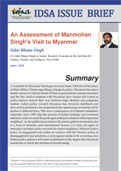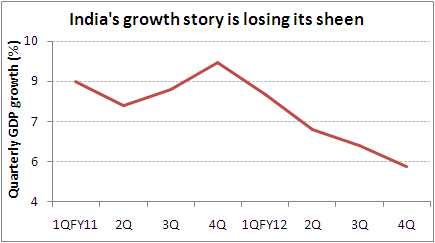| The Art of Going Glocal |
Two Tuck School professors produce a deeply researched book of case studies to show what works and what doesn?t when MNCs tweak products for emerging markets |
Govindraj Ethiraj / Jun 02, 2012, 00:39 IST Business Standard |
>Energy drink Gatorade is as American as baseball and apple pie but is actually derived from a concoction that includes ingredients like coconut water, carrot juice, rice water, carob flour and dehydrated bananas. It was used to treat cholera patients in Bangladesh.
> In the developed world, you visit hospitals to get hooked to an electrocardiograph (ECG) machine. In India, the machine comes to you, particularly if you live in a village. GE’s MAC 400 (a result of some knocks and much marketplace learning) is an ECG machine that costs $500 (compared to its rich-world cousin that goes for $3,000 to $10,000), is battery operated and is meant to be carried around. It also sells the world over.
>Tractor giant John Deere waltzed into India with a product “glocalised” for the local market. It also assumed Indian agriculture would evolve like in the US, small land holdings merge into large ones and thus need big tractors. To its shock, there were no takers. It went back to the drawing board, to a clean slate and a local team that engineered a new product for Indian conditions at a much lower price. The smaller horsepower (35 HP) tractor is now a hit with Indian farmers who want, among other things, their tractors to be all-purpose vehicles and not just for ploughing the fields.
So go the many examples of “reverse innovation”, products and services created in the developing world for the developing world and then the developed world — by teams hailing from both worlds. These teams are mostly led by mavericks who have broken down or mowed through rigid corporate hierarchies and adopted a range of persuasive methods, from scavenging to plain bullying.
Management authors Vijay Govindarajan, professor of international business at Tuck School of Business at Dartmouth College, and Chris Trimble, innovation speaker also on the Tuck faculty, have written a useful multi-case study-cum-how-to guide on reverse innovation, an approach they argue will increasingly define how products and services, including cutting edge, are developed in and for the globalised marketplace.
While reverse innovation has been increasingly discussed in recent years, this is evidently the first book that puts down the process that companies have used (or not) to reverse innovate their way out of and into new markets.
An important learning is that reverse innovation initiatives are born out of failures, as in John Deere’s India comeback or Procter & Gamble’s feminine hygiene product Naturella which was seeded in Mexico.
In creating Naturella P&G accepted, willy nilly, that its global feminine hygiene brand Always was not the right product, something that does not come easy for a company this size. Mexico’s hard-working women commuted long distances, had limited access to public restrooms and lived in small houses. They were concerned about skin care, effective odour control and wanted a pleasing sensory experience. None of which Always delivered. Eventually, Naturella borrowed raw materials from other P&G business units like baby-care, and sourced lotions and creams for skin protection from the beauty products category. For instance, chamomile which was used in skin-care products to treat diaper rash and facial skin irritation found its way here. It even used a production line that was sitting idle in Canada.
Often the first challenge large corporations face to reverse innovation is within. The first reaction is: the market is not ready for this product. Second, maybe we haven’t marketed this well enough or advertised its benefits. After all, this product took time to develop in our (developed) market too. And many other developed markets. Finally, if most of the Nobel Prize winners are sitting in this part of the world, surely, the innovation answers are lying here.
But developing economies are different. Not just a little different, but “night-and-day different” the authors point out. Eighty-five per cent of the world’s citizens, or 5.8 billion people, live in poor countries. And the total GDP of the poor countries is $35 trillion, half the world’s GDP. So executives in rich countries should avoid the trap: “Why can’t we just export the products and services we already have?”
That’s because markets like India and China are following different trajectories. America went from horse carriages to cars. India has motorcycles and three-wheelers along the way and perhaps all the way. China will go from no power to solar power, thanks to crippling pollution. India went from no landlines to mobile phones. And so on.
So how does one nail it ? The authors suggest a Local Growth Team — LGT — approach to crack such problems. An LGT is a “small, cross-functional entrepreneurial unit” physically located in the emerging market. It has a full set of business capabilities, authority to set strategy and mostly have a direct line to the big boss.
It’s not that reverse innovation works only for a Western corporation. Mahindra & Mahindra is the flip-side story to John Deere. When it arrived in the US, it found that its small tractor could not compete with John Deere in the US markets (large tractors for large land parcels, remember?). But it turned out that it was actually ideal for hobby farmers, landscapers and building contractors. A few modifications were called for, though — supersized seats and larger brake pedals!
Bangalore-based Narayana Hrudayalaya (NH) hospital showed that open heart surgery could be done in $2,000 per operation, compared to $20,000 in the US. Guess what — despite the lower price, NH’s net profit margin is higher than the US average. Moreover, the mortality rate within 30 days of bypass surgery is 1.4 per cent at NH compared to the US average of 1.9 per cent. So now, NH is taking its process and business to the developed world by building a 2,000-bed hospital in the Cayman Islands, an hour from Miami. The target: uninsured Americans who will be offered surgeries at half US prices.
There are more case studies, including Harman International (economy car entertainment systems), low-cost Logitech Mouse and the Prevention And Access To Care & Treatment (PACT) healthcare programme developed in Boston for Latin American countries. This reviewer found many of them being showcased for the first time, at least in this detail.
Reverse Innovation is targeted mostly at multinationals who are trying to get a leg up in markets like China and India. The lessons apply equally to Indian companies, as the Mahindra and NH examples suggest. Moreover, a careful reading of the case studies would be useful for entrepreneurs and others sitting in India, keen to innovate new products and services for the global market.
REVERSE INNOVATION
Authors: Vijay Govindarajan & Chris Trimble
Publisher: Harvard Business Review
Pages: 229
Price: $30












